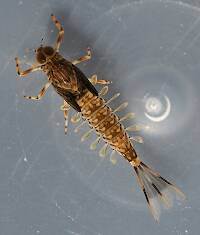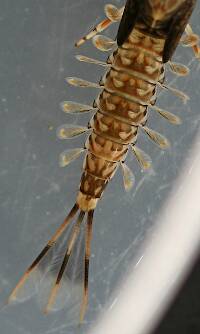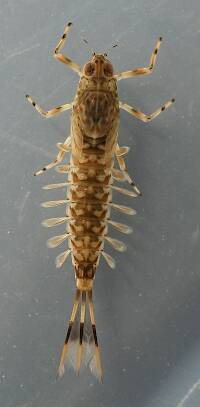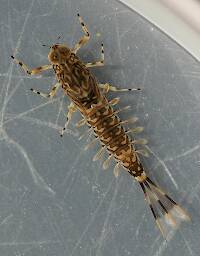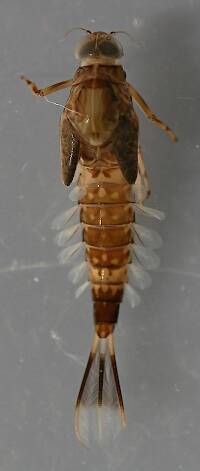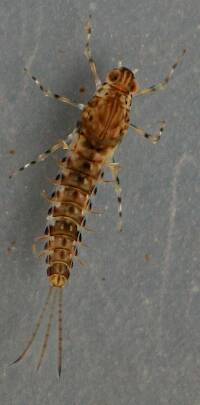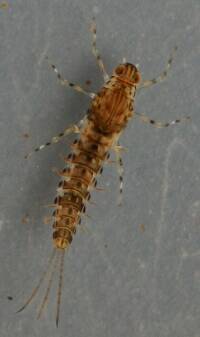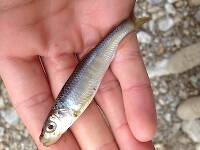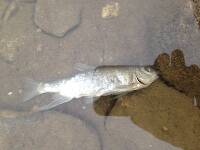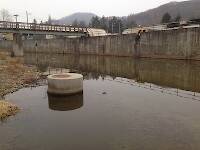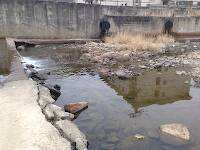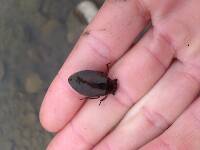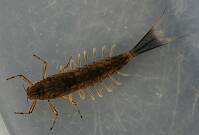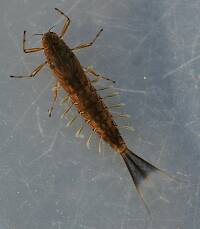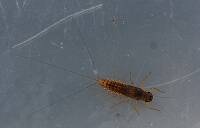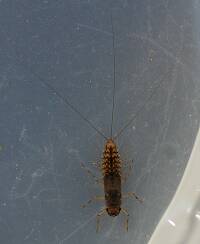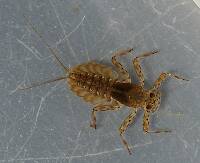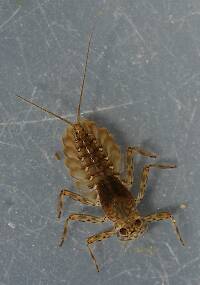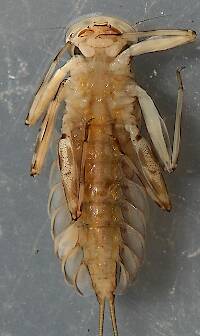
Hex Mayflies
Hexagenia limbata
The famous nocturnal Hex hatch of the Midwest (and a few other lucky locations) stirs to the surface mythically large brown trout that only touch streamers for the rest of the year.
Featured on the forum

With a bit of help from the microscope, this specimen keys clearly and unsurprisingly to Hydropsyche.

Troutnut is a project started in 2003 by salmonid ecologist Jason "Troutnut" Neuswanger to help anglers and
fly tyers unabashedly embrace the entomological side of the sport. Learn more about Troutnut or
support the project for an enhanced experience here.
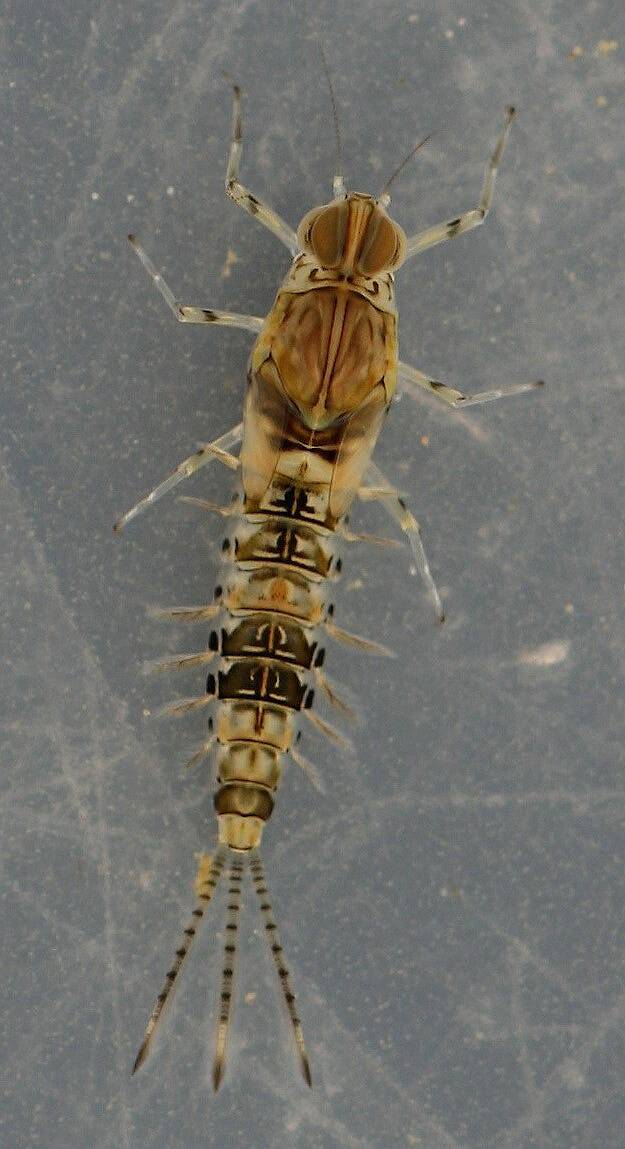
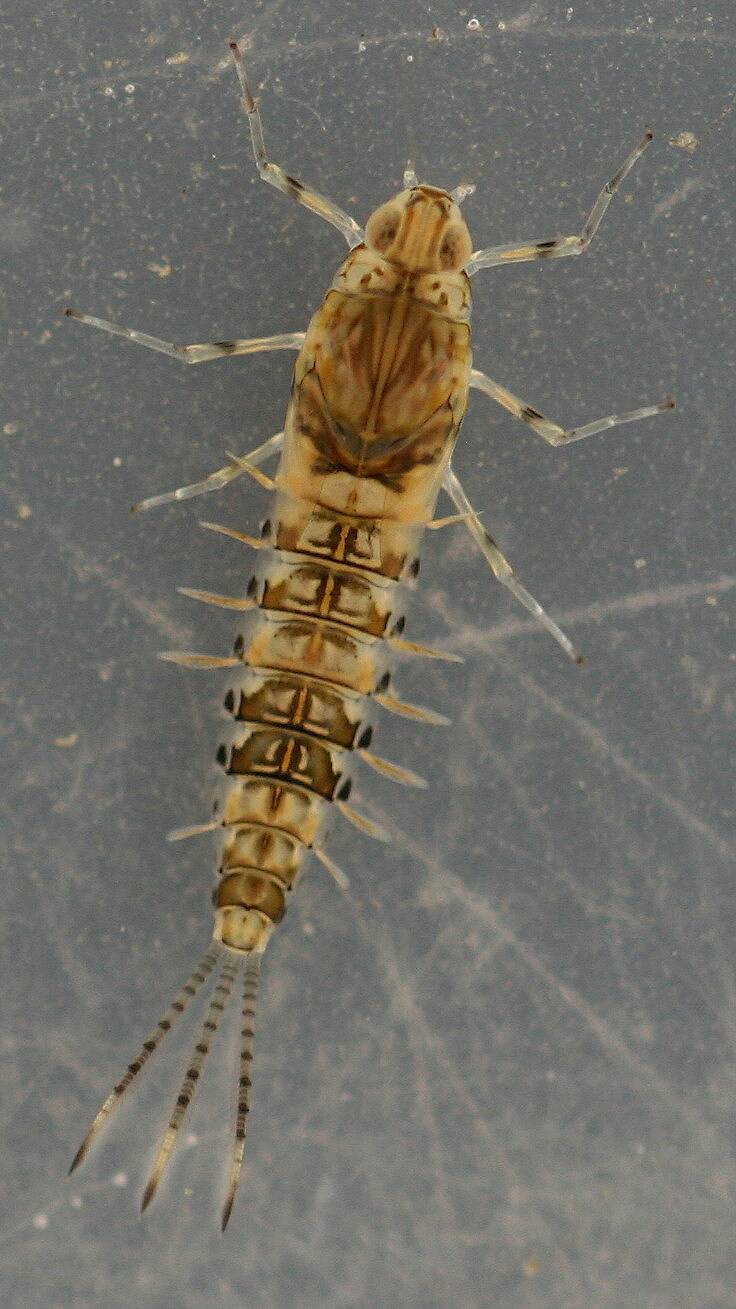


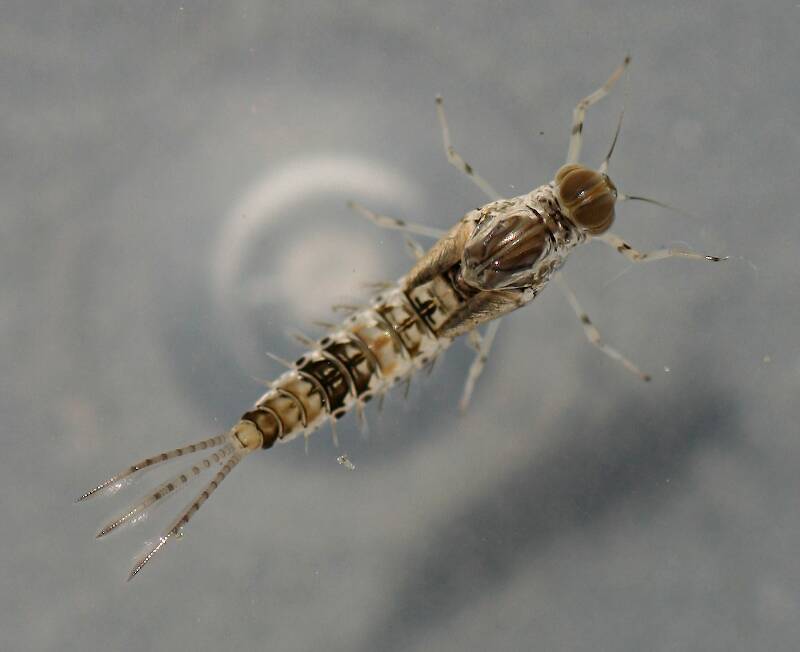
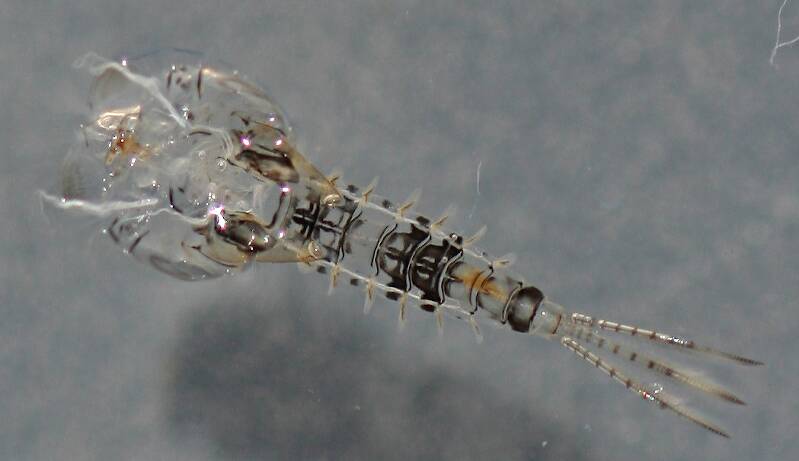
Millcreek on Jul 23, 2014July 23rd, 2014, 8:40 pm EDT
Thought some folks might be interested in these photos of Anafroptilum bifurcatum nymphs. They're abundant in the Russian River from mid March until mid June and again from mid July until September. They're usually found in slow water along the edges of glides and riffles. Subimagines usually emerge from early afternoon until early evening. Adults usually show up in the late afternoon or early evening. males congregate in swarms along the edge of gravel bars and females are usually seen flying over fast glides or riffles laying eggs. Mature nymphs are 5-6 mm long (not including cerci).
"If we knew what it was we were doing, it would not be called research, would it?"
-Albert Einstein
-Albert Einstein
Konchu on Jul 24, 2014July 24th, 2014, 6:24 pm EDT
INcredibly nice pictures; thanks!
Millcreek on Jul 25, 2014July 25th, 2014, 7:09 am EDT
Luke -
Glad you enjoyed the pictures. I like these little animals but it's always a challenge to get a good photo of them between their size and their tendency to move just about the time you get the focus zeroed in.
Mark
Glad you enjoyed the pictures. I like these little animals but it's always a challenge to get a good photo of them between their size and their tendency to move just about the time you get the focus zeroed in.
Mark
"If we knew what it was we were doing, it would not be called research, would it?"
-Albert Einstein
-Albert Einstein
Entoman on Jul 27, 2014July 27th, 2014, 7:27 am EDT
Great pictures, Mark. They look like miniature versions of Ameletus nymphs. I've had good luck with little Sawyer PT's using mallard flank touched up with a marker instead of pheasant tail barbules. The Oliver Edwards style of baetid nymph works great too. On Fall River they can be pretty effective from mid Summer on.
"It's not that I find fishing so important, it's just that I find all other endeavors of Man equally unimportant... And not nearly as much fun!" Robert Traver, Anatomy of a Fisherman
Millcreek on Jul 28, 2014July 28th, 2014, 3:40 pm EDT
Kurt - Yeah, they do look like miniature versions of Ameletus. Or at least have some of the same mannerisms and elegant coloration. Always amazes me how the colors don't really show until you get a photo or look at them under a microscope (or maybe they do if you have better eyes than mine).
When I get them in the field they look like little camouflaged specks at first, especially when they're sitting on some sand or gravel. Usually takes me a second to figure what I've got, but those banded cerci give them away pretty quickly.
When I get them in the field they look like little camouflaged specks at first, especially when they're sitting on some sand or gravel. Usually takes me a second to figure what I've got, but those banded cerci give them away pretty quickly.
"If we knew what it was we were doing, it would not be called research, would it?"
-Albert Einstein
-Albert Einstein
Quick Reply
Related Discussions
Topic
Replies
Last Reply




